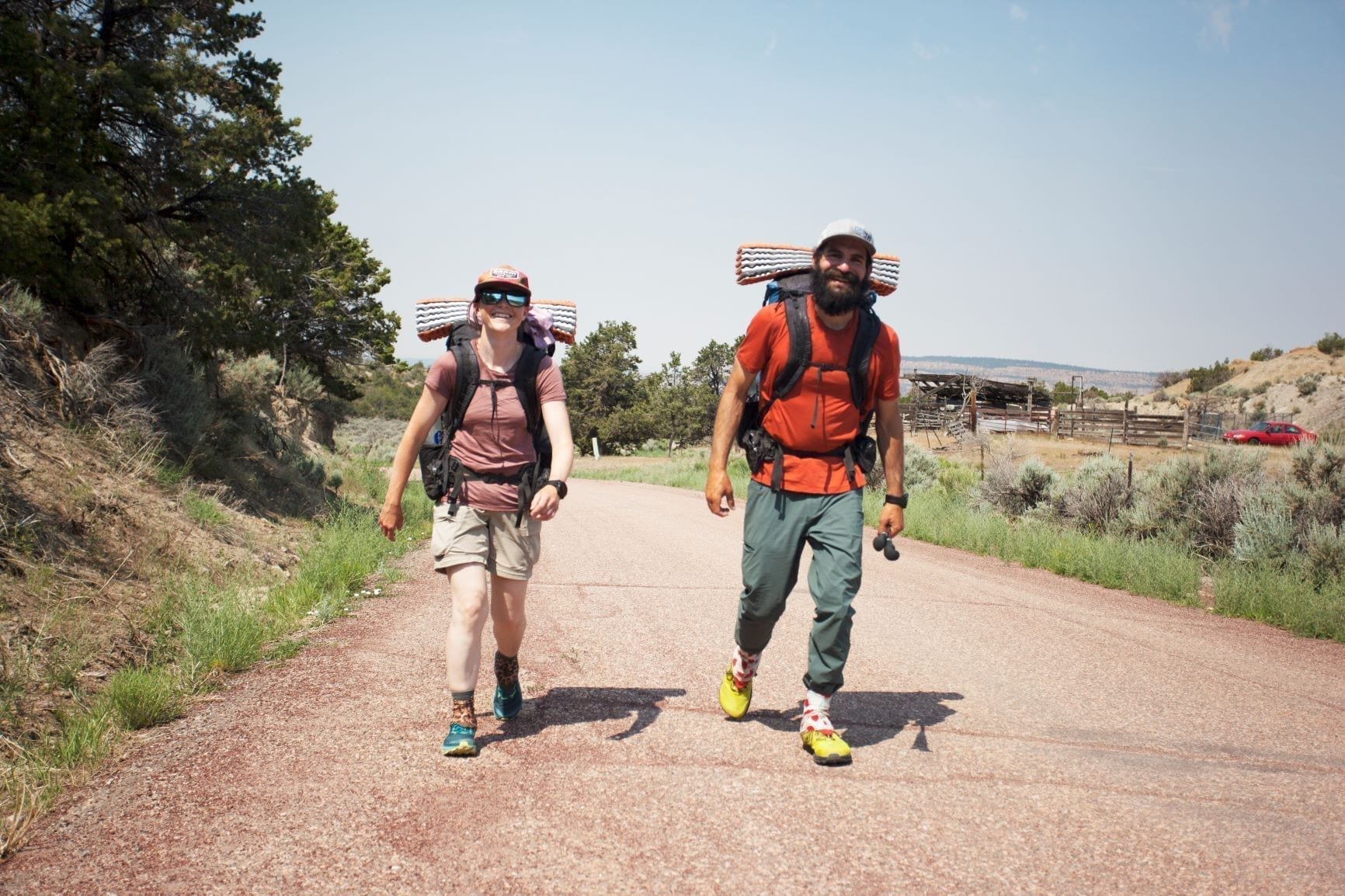By Stephen Montoya
CUBA – What once started out as a fun pastime, has become a way of life for two hikers going the distance of the Continental Divide on foot.
This nearly five and a half month trek is one of many for long-time hiking partners Renee Miller and Tim Beissinger.
In fact, both Miller and Beissinger have made quite a name for themselves on several social media platforms amassing one million followers on Tik Tok chronicling their camping skills along each hike.
The theme for this year’s hike is the Continental Divide and they just happened to be passing through Cuba New Mexico on their first leg of the journey.
“It was my idea at first to do a ‘thru’ hike,” Miller said. “Tim said I was crazy, that we should wait until we were retired, but after some persistence we found ourselves doing this.”
According to the couple, a “thru” hike is one that starts at point A and ends at point B.
“A loop backpacking trip is not a thru hike,” Beissinger said. “But a walk where your finish point is different from your starting point is a thru hike, which is a hundred or more miles.”
Miller said her and Beissinger started out slow, only taking a few small circular hikes at first and then pushing themselves to move further.
“We got into this because we felt like something was missing and weren’t happy just working all the time,” she said.
According to Miller, doing a long hike becomes a simple routine because of the repetition of what needs to be done.
“The life is simple,” Beissinger added. “You put your tent up, you filter your water… you walk and you eat and that’s easy, free, and fun.”
Over the past few years, both Miller and Beissinger have hiked trails in Germany and the Pacific Crest Trail off of the coast of California.
“I grew up camping,” Beissinger said. “But I didn’t do anything extreme until I met Renee in college. That’s when we started backpacking and camping all the time.”
This hike marks the couple’s second long distance “thru” hike, which will take them the better part of five months to complete.
All this time in the wilderness begs the question how Miller and Beissinger make a living with so much time devoted to these long hikes?
Miller said she quit her job as a Mechanical Engineer to do this hike and Beissinger said he works from the road as a Professor of Plant Genetics sitting in on Zoom meetings when he can.
“I was just in a meeting this morning from our hotel in Cuba,” Beissinger said. “I have it where I can work about 60 percent of the time and still do these hikes.”
On an average day Miller and Beissinger say they can cover nearly 20 miles. When the couple entered Cuba they had already covered 360 miles of their trek. From this point they still have 2,360 miles to go to reach their destination.
To aid them with the longevity of their journey, Miller and Beissinger prepacked nearly 100 meals and some gear to be sent to them at different locations along their route, which are sent to them by a family member.
“My mom is mailing (the packages) to us for this hike,” Miller said with a smile. “Here we are in our 30s and my mom is still sending me food.”
Beissinger said having the packages sent out to him and Miller throughout the hike make hauling gear much easier.
“If you were to take out the food and water from our packs we usually haul around eight to nine pounds worth of gear,” Beissinger said. “Just very little stuff. The gear challenge is figuring out what we don’t need not what we do need.”
To help supplement what they carry, Beissinger said, 95 percent of hikers do most of their resupplying in gateway towns like the Village of Cuba that reside near long distance trails.
“This is what makes a ‘thru’ hike possible, versus a month long or a two week hike,” he said. “Gateway towns play a huge role in the supply chain when you are hiking for five months at a time.”
Besides the need for supplies on their hikes, Miller and Beissinger say they are prepared for an emergency if one occurs.
“This is why we hike in pairs,” Beissinger said. “If one of us gets hurt the other will look for cell phone range and dial 911. We are alert for this hike especially because of the lack of human contact in remote areas.”
Miller and Beissinger said they haven’t seen many hikers on the Continental Divide hike, which host around 400 participants annually.
“We have seen as many bears as we have people,” Miller said. “This hike, in honesty, can be a little lonely.”
Beissinger said the flipside of this is being able to observe super remote areas that have remained untouched for many years.
“The landscape is amazing,” he said. “Over the course of a day or two we can see the full cycle of an ecosystem.”
Beissinger and Miller said they walked through an area where they could see a forest fire in the distance and then hiked through a burned area. As the day continued, they walked through an Aspen forest, which turned into a mature forest.
“That’s one hundred or two hundred years of forest,” Beissinger said. “And we witnessed all of this in a day of walking.”
If you would like to follow Miller and Beissinger on social media go to:
Instagram: https://www.instagram.com/reneeandtim/
Tik Tok: thruhikers Renee-and-Tim

